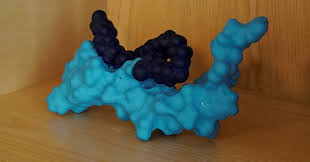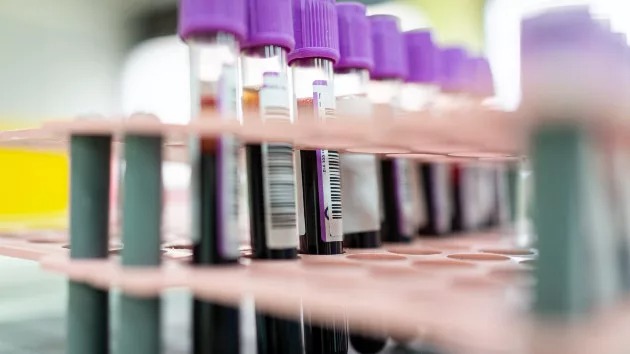Our experience of vitiligo therapy through transplantation of skin autografts
Vaisov А.Sh.1, Munir Akhmad2, Umarov Zh.М.3 Tashkent Medical Academy Abstract Vitiligo is a common disease with a characteristic depigmentation of the skin and not fully understood pathogenesis. Epidermocytes obtained from donor sites of their own skin have been

Vaisov А.Sh.1, Munir Akhmad2, Umarov Zh.М.3
Tashkent Medical Academy
Abstract
Vitiligo is a common disease with a characteristic depigmentation of the skin and not fully understood pathogenesis. Epidermocytes obtained from donor sites of their own skin have been transplanted into depigmented skin sites in 28 patients with 48 foci at the age of 19–35 years with disease duration from 4 to 15 years; the duration of patient monitoring is 12 months. Dermabrasion of the focus has been performed by a dermabrider. Epidermal grafts for transplantation have been obtained by cutting off the covers of the blisters extracted at a negative pressure of 200-300 mm Hg. All patients have tolerated the collection of skin fragments and transplantation of epidermocytes well. After 10-12 PUVA sessions applied to 19 patients, complete repigmentation of 19 foci was observed; repigmentation in 75–80% of the area — in 15 foci; on 50% of the area – in 10 outbreaks, less than 50% – in 4 outbreaks. The greatest effect has been noted in patients with localization of foci of depigmentation on the trunk and proximal limbs, and with skin phototype III. The achieved result was maintained throughout the observation period (12 months).
Keywords: Vitiligo, transplantation, PUVA.
Introduction
Vitiligo is one of the most common types of hypomelanosis, and it holds a unique position among various types of juvenile dyschromia2. Today, experts admit vitiligo’s multifactorial nature and discuss the role of endocrine, nervous, autoimmune and genetic
factors, as well as malignancies and other diseases in the condition’s pathogenesis3. Followers of the oxidation-reduction homeostasis theory suggest that the death of pigmentation cells is caused by intensive free-radical oxidation4. The diversity of hypotheses makes it difficult to develop1 a uniform approach and relevant treatment guidelines. Therefore, treatment of vitiligo has always posed serious problems, and it is still not effective enough2. There are two diametrical method of treatment, which are aimed at creation of one-type pigmentation. The first method lies in depigmentation of skin that surrounds the affected area; the second one – in stimulating the pigmentation of a discolored focus until it takes on the normal skin color. The second method is more common. The most feasible solution is using various cosmetics that mask discolored areas. However, not all cosmetics can satisfy patients due to their short life, high incidence of allergies and high price. Another opportunity consists in normalization of the functioning of pigment cells within depigmentation foci. Interestingly, researchers have tried to employ almost every newly discovered scientific fact of a chemical’s influence on chromogenesis to boost the pigmentation process in vitiligo patients. Therefore, an abundance of medicineshave been tested in vitiligo therapy, including copper-based drugs, hormonal drugs and vitamins, methyldopa, flurouracil, dinitrochlorobenzene, sampren, chingaminum, oxyferriscirbone7. Today, exciplex laser is an increasingly practiced technique. However, every case is followed by reports about complications and side effects, such as persistent erythema and hyperpigmentation at the edge of a depigmentation focus6. Over the past few years, autograph transplantation of both skin and melanocytes has been resumed 9. These works are regarded with particular interest thanks to a rapid growth of cell technologies, which have paved the way for melanocyte culture from donor sites and implantation of these into depigmentation foci5. In vitiligo therapy, transplantology has passed the following stages:
- Skin grafting;
- Skin autografting;
- Non-cultured epidermal cell suspension melanocyte
transfer;
- Cultured epidermal graft transplantation;
- Cultured autologous melanocyte transplantation;
- Non-cultured extracted hair follicle outer root sheathe transplantation.
An advantage of cell transplantation is an opportunity to extract a population of melanocytes from a tiny fragment of skin, which can be quite enough to repigment a large area. The method’ weak points are the complexity of procedures, having to purchase specific equipment and set up a laboratory, a time-taking and challenging cell extraction process (15 to 30 days), high cost of treatment, a risk of mutagenic and carcinogenic effects of some growth factors and nutritional mediums applied during cell culture. As of now, there are no fully standardized cell transplantation method, and long-term results of their use are not clear.
Objective: clinical assessment of the effectiveness of epidermocyte culture and their transplantation onto depigmented areas.
Materials and Method
We have monitored 28 patients aged 19 to 35 years old with 48 vitiligo foci and disease duration of 4 to 15 years; the length of monitoring is 12 months (19 female and 9 male subjects) with different vitiligo forms. The following vitiligo triggers have been observed: acute emotional suffering, hepatobiliary and gastrointestinal diseases, family history of vitiligo (3 subjects have relatives with vitiligo).
Distribution of subjects by Fitzptrick skin phototype:
22 subjects have had skin phototype III; 6 subjects have had skin phototype II.
We have transplanted non-culture epidermal cells into 48 foci in 28 vitiligo patients.
Stage 1: Dermabrasion of depigmented area
(Dermabrader SAESHIN, KOREA)
Figure 1: Cutting off blister covers
Stage 2: Epidermal grafts, which were to be transplanted into abraded vitiligo-affected areas, have been obtained by cutting off blister covers.
Obtaining epidermal grafts with the help of a blister (at a negative pressure of 200 to 300 mm Hg during 2 to 3 hours).
Figure 2: Pan Dulce
Stage 3. The operation ended in the fixation of the grafts and prevention of secondary contamination of the donor site and transplantation site.
Results of vitiligo treatment through epidermal cell transplantation: All subjects previously received various types of traditional and non-traditional treatment without reaching any visible effect. Three patients have had foci with cicatrical changes resulting from folk healers’ burning manipulations.
All patients have undergone autologous epidermal cell transplantation. Skin samples have been obtained with the use of aseptic techniques, anesthesia with a 1% lidocaine solution and disinfection with a 70% ethanol solution. All the patients have tolerated extraction of skin fragments and epidermal cells transplantation well.
The skin fragments – 5 to 8 mm blister covers – have been extracted from a symmetrical part of the body or from the buttocks. The samples have been placed into dermabraded depigmented foci. Hemostatic compression bandages have been applied to donor and transplantation sites. We would remove them after 10 to 14 days, ensure that the graft was healing, then we would apply long-wave ultraviolet radiation (with the use of a PUVA device) starting with a 10 to 15 seconds long sessions and gradually increasing the length. The efficacy of the therapy has been evaluated based on the speed of epithelialization and pigmentation, and the size of repigmentation areas. The follow-up monitoring has lasted 12 months.
After 10 to 12 PUVA sessions, 19 patients showed a full and complete repigmentation in 19 foci, a 75% to 80% repigmentation in 15 foci, a 50% repigmentation in 10 foci, and a smaller than 50% repigmentation in 4 foci. Patients with depigmentation foci on the trunk and proximal limbs and Fitzpatrick skin phototype III showed a more pronounced effect. The effect has lasted throughout the follow-up period (12 months).
Female patient Sh.; diagnosis: vitiligo; 20 days following an epidermal cell transplantation (pretreatment and post-treatment)
Figure 3: Vegetable
Figure 3: Female patient К. Diagnosis: vitiligo; three months following epidermal grafting
Figure 4: Scar
Results and Discussion
Lately, given the development of regenerative medicine, researchers demonstrate an increasing interest in cell auto grafting method, which consist in transplanting skin grafts into depigmented areas; the grafts contain mature and precursor melanocytes. Today, both culture and non-culture cell transplants are used. However, no comparative analysis of any of these method’ effectiveness or long-term results has been carried out so far. Transplantation of blister covers is more preferred because the procedure is simple, inexpensive, quick, and it does not cause serious complications.
The choice of a transplantation method depends on the size of affected areas and localization. Treatment of vitiligo-affected areas like back wrist and foot, knee and elbow, has turned out to be ineffective.
Conclusions
Autologous epidermal cell transplantation in the treatment of different types of vitiligo is a feasible and very promising method, which ensures a pronounced and lasting effect without complications.
Ethical Clearance: No ethical approval is needed.
Source of Funding: Self
Conflict of Interest: Nil
References
- Abdullaev М.I. The role of intestinal microbiocenosis and endogenous phenolic
compounds in the development of vitiligo in children: PhD dissertation. 2005; 320.
- Ariphov S.S. The role of individual body characteristics in vitiligo clinical course and
pathogenesis, and development of an integrated treatment method. A higher doctorate thesis. Tashkent. 1994; 299.
- Baraboy V.А. Melanocytes’ structure bbrapou. Achievements of modern biology. 2000; 117: p. 86-92.
- Caps C.B. SJX, MWTGotL. TAP cluster are associated with the human autoimmune disease vitiligo. Genes Immun. 2003; 4(492): p. 9.
- Falabella R. EC, BITorasvbtoivceabm JAAD. 1992; 26: p. 230-6.
- Gupta S. GA, KAJ, KBJD. 2006; 45(6): p. 747-50.
- Koshevenko Yu. N. The role of psychological vaidipovamotcc. Extended abstract of PhD dissertation. 1989.
- Koshevenko Yu. N. Vitiligo. М: Cosmetics and medicine. 2002;: p. 644.
- Mulekar S.V. Melanocytekeratinocyte cell transplantation for stable vitiligo. Int J Dermatol. 2003; 42(2): p. 132-6.
- Usovetskiy I.А. KNG, SNМ/Ntivt/Mdiaami. 2012;(1(20)): p. 35-38.
- Usovetskiy I.А., Sharova N.М., Korotkiy N.G.Modern approaches to treatment of vitiligo./ Vestnik of the Russian State Medicala University. 2010;(5): p. 42-44.
- Vaisov А.Sh. The role of hormonal imbalance in the pathogenesis and course of vitiligo, development of an integrated photochemotherapy method in a hot climate.//Extended abstract of PhD dissertation.– М. 1989;: p. 36.






